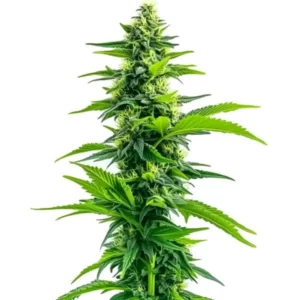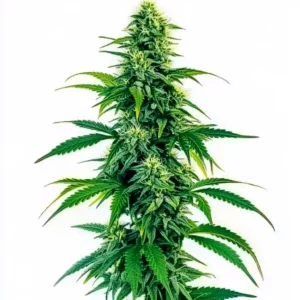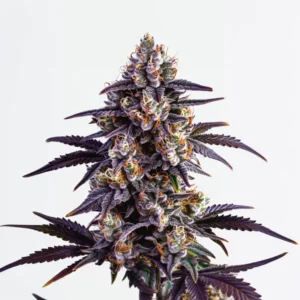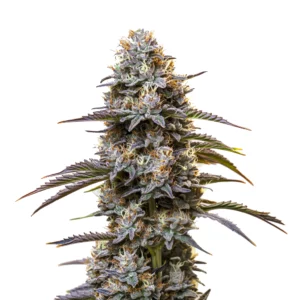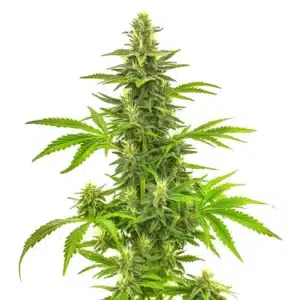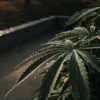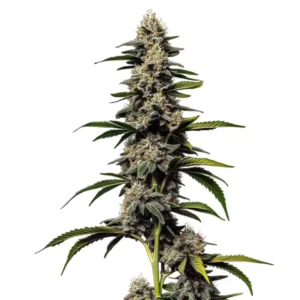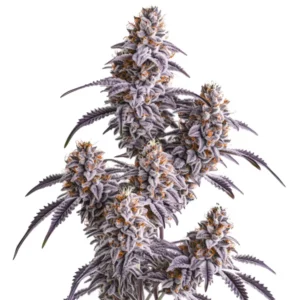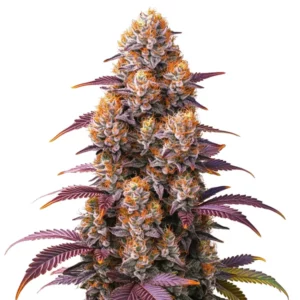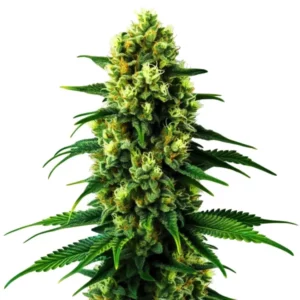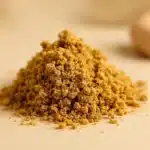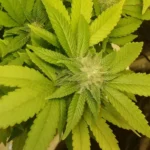
Effective Control of Russet Mites on Cannabis Plants
One significant issue many growers encounter is the variety of pest problems affecting cannabis, such as root aphids, foliar aphids, thrips, and fungus gnats. Among these, the most feared are pest mites, including the notorious russet mites cannabis growers dread. These tiny pests can devastate crops, making it crucial to understand and manage them effectively.
What are russet mites?
Russet mites are tiny, almost microscopic pests that are often difficult to detect on cannabis plants. These pests are brownish red in color and have an oval, slightly rounded shape.
Recommended Strains
Acapulco Gold
|
|
THC | 15% - 19% (Medium) |
|
|
Type | Feminized |
|
|
Yield | Medium |
|
|
Phenotype | 30% Indica / 70% Sativa |
Acapulco Gold Autoflower
|
|
THC | 20% - 24% (Medium) |
|
|
Type | Autoflowering |
|
|
Yield | Medium |
|
|
Phenotype | 30% Indica / 70% Sativa |
Due to their minuscule size, identifying russet mites on cannabis is challenging as they can easily hide in the smallest crevices of the plants. If you’re dealing with an infestation, finding the best hemp russet mite eradication methods is crucial because these pests are like the ninjas of the pest world, infiltrating your cannabis grow and causing damage before you even notice.
Promos & Deals
Russet Mites and Their Impact on Cannabis Plants
Russet mites can have devastating effects on your cannabis plants. If left untreated, they can cause leaf yellowing and necrosis, leading to reduced yields or even complete crop loss. In severe cases, these mites can weaken the plant’s defense mechanisms, making it more vulnerable to other pests and diseases. To prevent long-term damage, it’s crucial to monitor your plants closely and act at the first sign of infestation. Think of it like a health checkup; catching issues early is always better than dealing with them later!
Signs of a Russet Mite Infestation on Cannabis Plants
Russet mites, a common pest in cannabis cultivation, can be challenging to detect as they do not leave noticeable bite marks. Monitoring the lower leaves of your cannabis plants can help identify an infestation early, as russet mites typically move upwards. Here are the key signs to look for:
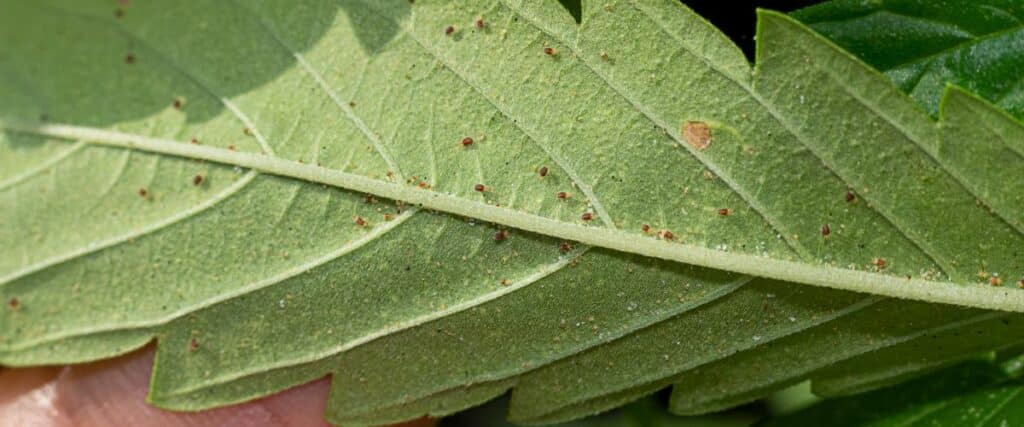
1. Leaf Edges Curling Upwards:
- One of the first signs of russet mite infestation is the curling of leaf edges upwards. This occurs because the mites feed on the sap, depriving the leaves of essential nutrients.
2. Bronzing or Yellowing of Leaves:
- Affected leaves may display a bronzed or yellowed appearance. This discoloration results from the stress caused by the mites’ feeding activities.
3. Brittle and Dry Stems and Leaves:
- As russet mites extract moisture and nutrients, stems and leaves may become brittle and dry, compromising the plant’s structural integrity.
4. Plant Drooping:
- In severe infestations, the top of the plant may begin to droop. This is a critical indicator of a russet mite problem, reflecting the overall decline in plant health.
5. Necrotic or Yellow Spots:
- The stress from mite feeding can cause necrotic spots or yellow patches on leaves. These spots indicate localized damage and nutrient deficiency.
6. Stunted Growth:
- Russet mites can significantly stunt plant growth. If your cannabis plants are not growing as expected, it might be due to these pests.
7. Smaller Buds:
- During the flowering stage, an infestation can led to smaller buds. This reduction in bud size is a result of the plant’s compromised ability to nourish its flowers.
Given the microscopic size of russet mites, you will need a portable microscope to confirm their presence. If you observe these signs and have ruled out other issues such as nutrient deficiencies, it is crucial to consider russet mites as the potential cause of your cannabis plant’s poor health.
Effective treatments are available for russet mite infestations, so early detection and prompt action can help restore your plants to health.
Russet Mites Treatment for Cannabis
Russet mites pose a significant challenge in cannabis cultivation due to their habit of laying eggs inside the plant tissues. However, with persistence and a well-devised strategy, you can protect your cannabis plants from these relentless pests. Here are some effective russet mite’s treatment steps:
- Remove Heavily Infested Plants: Eliminate all heavily infested plants from your grow space. Russet mite nymphs can travel to healthy plants via horizontal air currents, so removing the most affected plants helps contain the infestation.
- Consistent Treatment: If you are facing a severe infestation, it is crucial to treat your plants multiple times. A single treatment won’t suffice, as russet mites can be quite resilient.
- Continued Vigilance: Even after you believe the mites are eradicated, continue the treatment regimen for an extended period. Russet mites can easily return, and ongoing treatment helps prevent a resurgence.
By following these steps, you can effectively manage and treat russet mites in your cannabis garden, ensuring healthier and more robust plants.
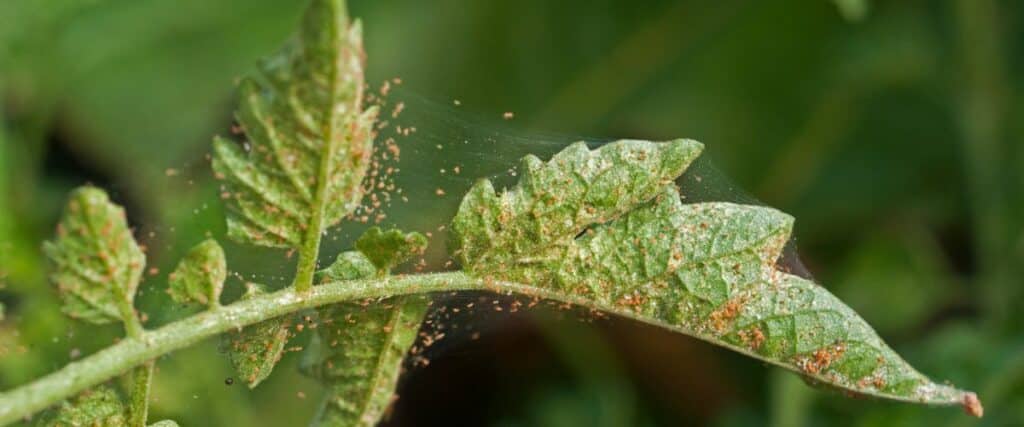
How to Prevent Russet Mites in Cannabis Cultivation
Optimal Cultivation Practices
Implementing sound cultivation practices is one of the most effective methods to prevent russet mites in cannabis. This involves maintaining ideal growing conditions, such as proper temperature, humidity levels, and airflow. By creating a healthy environment for your plants, you make it difficult for russet mites to establish themselves and thrive. Think of it like maintaining a balanced diet and regular exercise for your body – it keeps your plants in peak condition and less susceptible to pests and diseases.
Physical Barriers
Another effective strategy to keep russet mites away from your cannabis plants is to use physical barriers such as row covers or screens. Ensure all entry points, including windows and vents, are sealed completely to prevent these pests from getting in. This method is akin to installing a fence around your property to keep intruders out and protect your plants.
Natural Predators
Enhance russet mite management by introducing natural predators like ladybirds and lacewings into your growing environment. These beneficial insects feed on russet mites and other pests such as white aphids, reducing their populations and preventing infestations. It’s like having a team of bodyguards for your plants; they handle any pesky bugs that attempt to cause problems.
How to Get Rid of Russet Mites on Cannabis
Is it possible to get rid of russet mites on cannabis? Absolutely! If you’re wondering how to get rid of russet mites, here are some effective methods to eliminate them:
Chemical Methods
For a russet mite infestation on cannabis, chemical treatments are often the most efficient solution. Insecticides such as neem oil and pyrethrin-based products are specifically designed to combat russet mites. To achieve the best results, carefully follow the instructions on the product label and apply the treatment at the recommended rate and interval.
Wettable sulfur is a cost-effective solution for eradicating russet mites. For best results, ensure the sulfur comes into direct contact with the mites. Mix 2 teaspoons of sulfur into a gallon of water and spray it on the plants. To minimize potential damage, water your plants before treatment. Alternatively, sulfur plant fungicides can also be used effectively.
Natural Solutions
For those looking for a more organic approach to dealing with russet mites on cannabis, several natural treatments can be effective. Insecticidal soaps: Regular application of this solution can help control the mite population. Additionally, neem oil, as well as garlic and onion sprays, are effective natural remedies for managing russet mites.
Diatomaceous Earth: This fossil-based powder dehydrates russet mites on contact, helping to mitigate their presence. While diatomaceous earth is more of a preventive measure than a complete remedy, combining it with other treatments can enhance its effectiveness. Add it to your growing medium for optimal results.
Natural Predators: Introducing natural predators can help control and prevent russet mite infestations. Predators such as Neoseiulus californicus, Galendromus occidentalis, and Amblyseius andersoni are available commercially. However, the conditions favorable for growing cannabis may not support the survival of these predators, making them less effective.
Natural enemies of russet mites can help keep an infestation in check, particularly in cannabis cultivation. Utilizing these beneficial predators can enhance integrated pest management strategies and maintain healthy crops.

Beneficial Predators for Russet Mite Management
Phytoseiulus persimilis: This predatory mite is highly effective against spider mites, including the two-spotted spider mite, a common pest on cannabis plants. It actively hunts down spider mite colonies, consuming their eggs, nymphs, and adults. Its voracious appetite and ability to seek out infestations make it an excellent ally in cannabis cultivation.
Neoseiulus californicus: Known for its rapid population establishment and efficient control of spider mite infestations, Neoseiulus californicus is another valuable predatory mite. It thrives in various environmental conditions, making it adaptable for use in diverse growing environments to combat russet mites and other spider mite species.
Neoseiulus fallacis: This versatile predatory mite effectively targets multiple spider mite species, including the two-spotted spider mite. Its tolerance to a wide range of environmental conditions ensures it can be deployed in different growing settings, providing reliable control over mite populations.
Amblyseius swirskii: Primarily recognized for controlling thrips, Amblyseius swirskii also preys on spider mite eggs and young larvae. Many cultivators use it as a preventative measure to keep russet mite populations in check, ensuring a balanced ecosystem within the grow space.
Stratiolaelaps scimitus: While this soil-dwelling predatory mite primarily targets pests such as fungus gnats and thrips, it indirectly helps minimize conditions favorable for russet mites. By maintaining healthy soil and reducing other pest populations, it contributes to a comprehensive pest management strategy.
Ladybugs (Hippodamia convergens): These generalist predators feed on a variety of soft-bodied pests, including aphids, thrips, and spider mites. Although they are not as specialized as predatory mites, ladybugs can still play a role in an integrated pest management plan by contributing to the overall reduction of pest pressure in cannabis cultivation.
Combating Russet Mites: Proven Strategies for Outdoor Cannabis Cultivation
Cannabis plants grown in open air and soil attract various pests and diseases due to the natural environment. This is one of the inherent risks of outdoor cultivation. No combination of agricultural practices and materials can eliminate these threats.
However, the most successful outdoor cannabis growers implement the following strategies to manage these challenges:
- Utilize Systemic Deterrents: They feed their plants systemic materials like SNS-209 and potassium silicate. These substances deter mite attacks by fortifying the plants and altering their scent, making them less attractive to pests.
- Daily Monitoring and Maintenance: They closely monitor their crops, removing and destroying any infested plant materials daily. This vigilance helps to minimize the spread of pests and diseases.
- Adjust Crop Numbers for Loss Management: They accept that a percentage of their crop will be lost to insect and disease predation. To manage this, they adjust their plant numbers to ensure that their profit-loss ratio remains tolerable.
These methods are key for managing pest infestations and maintaining healthy cannabis plants in outdoor environments. If you’re looking for how to get rid of russet mites effectively, consider combining these strategies for best results. Additionally, indoor growers can also adopt certain practices to protect their crops from pests.
FAQs
What are russet mites in cannabis cultivation?
Russet mites are tiny, almost microscopic pests that attack cannabis plants, making them difficult to detect without magnification. These brownish-red mites feed on plant sap, causing leaf yellowing, curling, and stunted growth. Russet mites cannabis infestations can devastate crops if not identified and treated promptly, so early detection is crucial for growers.
How do I know if my cannabis plants have russet mites?
Key signs of russet mites cannabis infestations include upward curling leaf edges, bronzing or yellowing leaves, brittle stems, stunted plant growth, and smaller buds during flowering. Because russet mites are so small, using a handheld microscope is recommended to confirm their presence on your plants.
What is the best way to get rid of russet mites on cannabis?
To eliminate russet mites cannabis growers can use integrated pest management strategies, including removing heavily infested plants, applying sulfur sprays or neem oil, and introducing natural predators like Neoseiulus californicus. Consistent treatments and maintaining optimal grow conditions help prevent reinfestations and protect plants from further damage.


